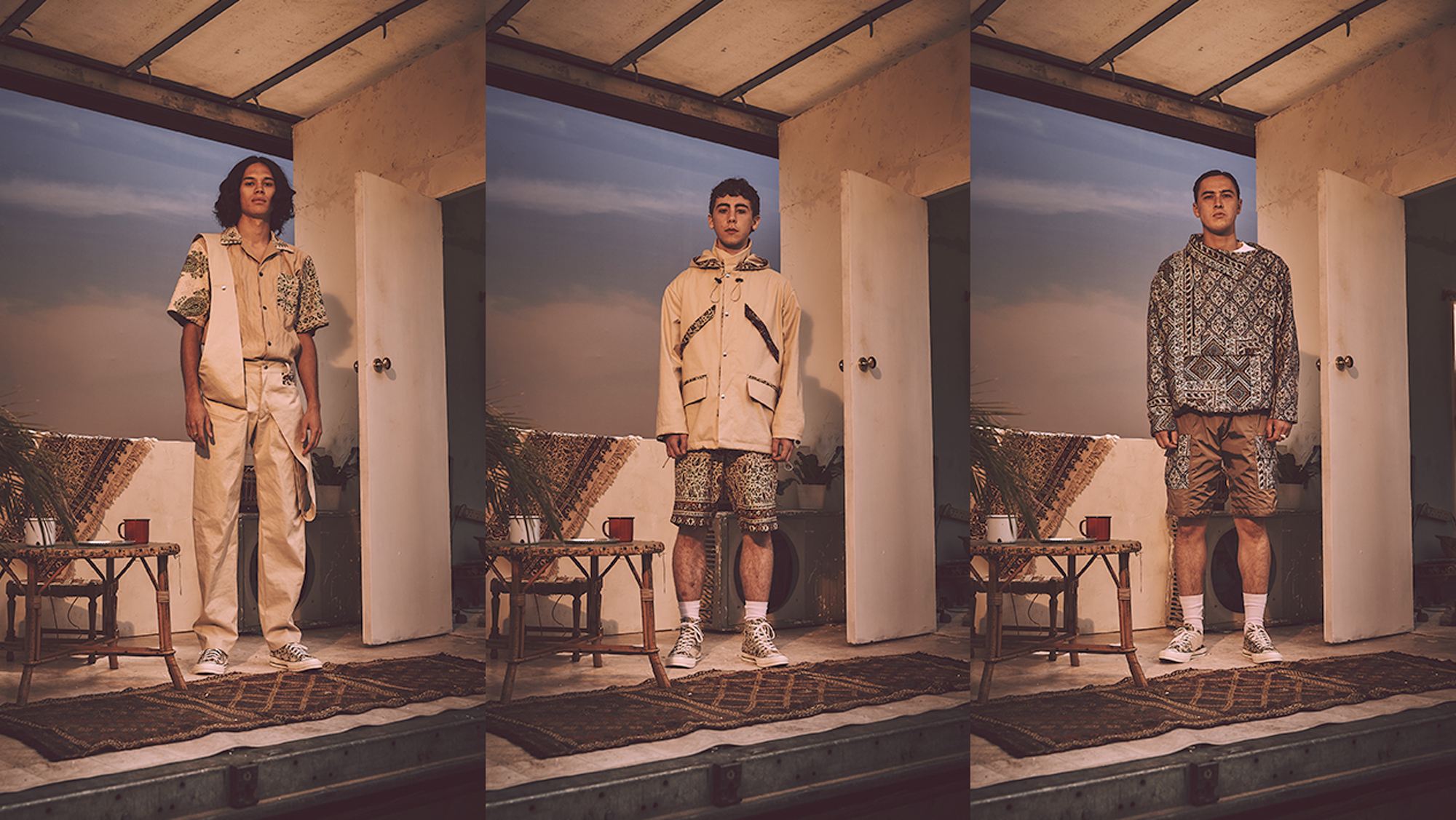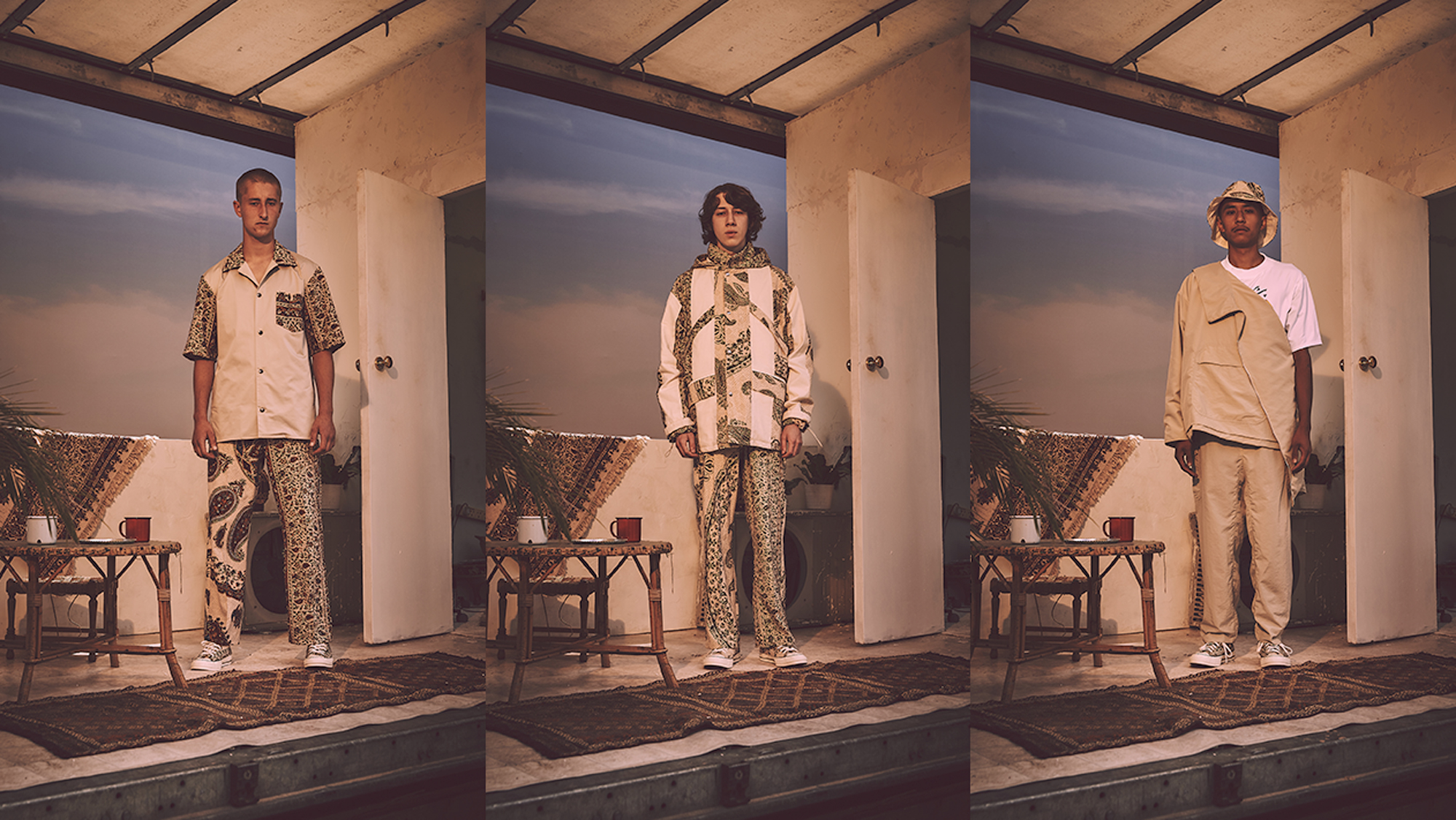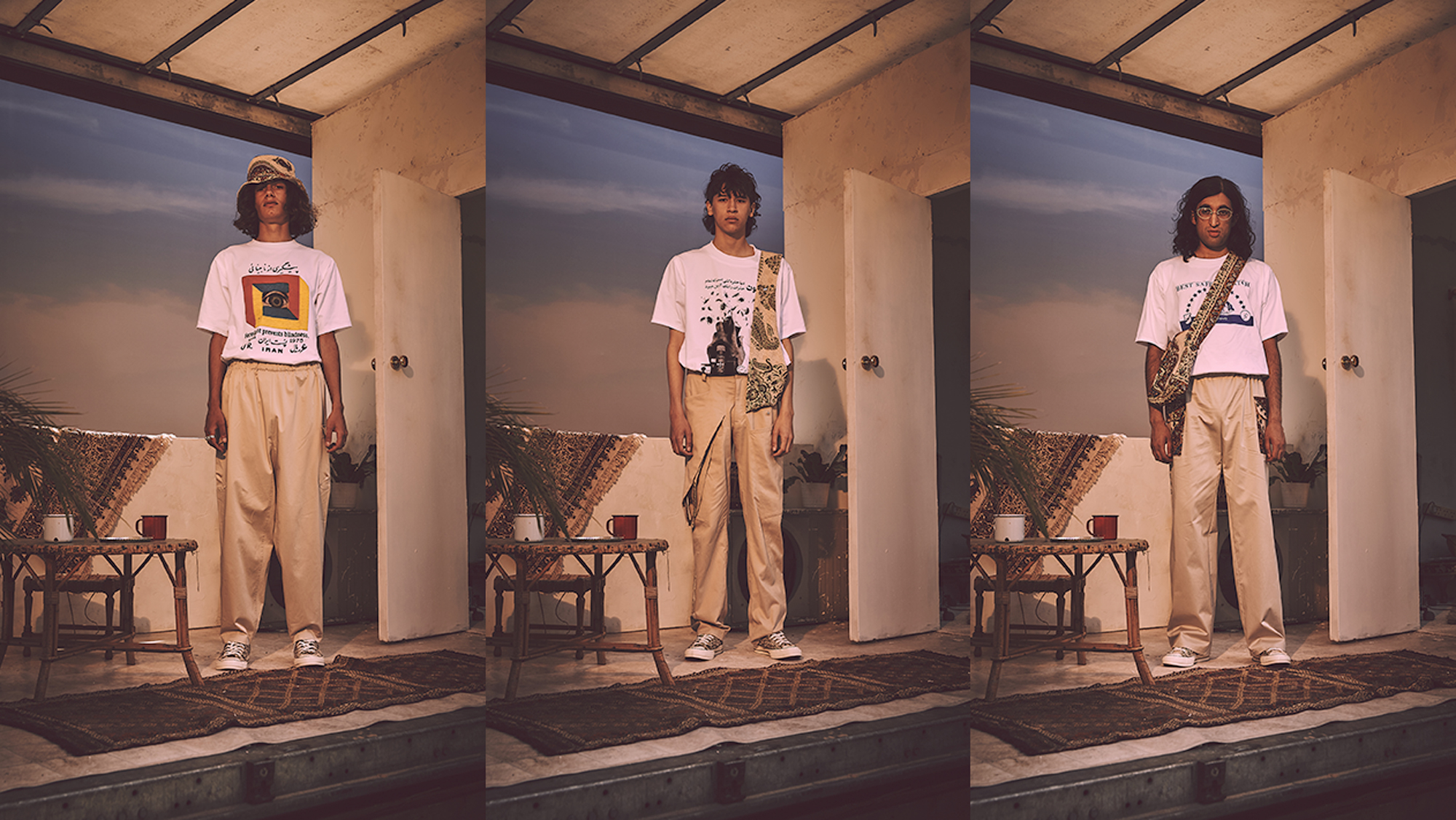Who?
Paria Farzaneh is part of an exciting new generation of London designers using their collections to explore their identities. From mixed-heritage realities to LGBTQ safe spaces, each tell their own sociopolitical narrative as they celebrate who they are. For Paria — whose parents are Iranian — it’s all about dispelling myths, challenging misconceptions and sharing her own beautiful reality. “The media constantly undermines the image of Iran and demonises the Middle East,” she explained over the sound of Lauren Auder blasting from her spring/summer 19 presentation. “That’s not the real Iran. I want to demonstrate the beauty of the culture. If I’m able to alter even a select few people’s understanding of something as small as the aesthetic, then I’ll be happy.” Breaking free of regular catwalk venues, Paria opted to show her debut on-schedule collection off the back of a lorry on the South Bank, as she celebrated the Iranian New Year. As the lorry dropped its sides, attitudes and aesthetics were both shifted. We saw Iran how Paria Farzaneh sees it.

What?
“At the start of the new year, you wear new T-shirts, new socks, new everything. The Iranian new year starts when the sun hits the equator on the first day of spring. You leave your house in new clothes, re-enter and start anew,” Paria explained at the show. The final show of LFW Men’s spring/summer 19 was Paria’s new dawn. “This is the big reveal,” Paria explained. “I had been working on this for such a long time, even before last season’s presentation. This spring/summer 19 collection is all about Iranian New Year, a holiday of rebirth and renewal. Hence the seven sets.”
An integral part of Iranian New Year celebrations are the seven S’s, or haft sin, which are structured from seven essential symbols — three from the material world, three from the immaterial world and one that sits between to tie these two worlds together. “The same way you might have a Christmas tree, you’ll set up seven symbolic items; the mirror represents reflection, the candles represent light, the fish life, the vinegar patience, and so on,” she added. The seven rooms of the presentation represented this progression from the material to the spiritual. Stone showed us the beginning, light the end and human in the middle connecting both worlds. Throughout models rested, cut one another’s hair, smoked and walked between the spaces. These Thomas Bird-designed worlds were captivating but the hand-printed tech-infused reality-wear garments themselves were stitched with just as much narrative.

“I’ve built the collection around these same ideas of renewal. The result are hybrid pieces, jackets that become bags, trousers that become shorts. There’s also life too. My uncle sadly passed away in February and we used his favourite mountaineering pants as a tribute to him, renewing the silhouette and adding Iranian fabric printed in Isfahan as patch pockets. Elsewhere, Paria continued her collaboration with Converse as each model wore different Iranian-printed sneakers and (pun intended) provided that step forward in changing the understanding of Iranian aesthetics.
Wow!
“People care,” Paria answered when we questioned the reaction to her presentation. “They want to understand what’s going on. For me, it’s amazing to have a platform to showcase culture that may have felt lost or misunderstood.

